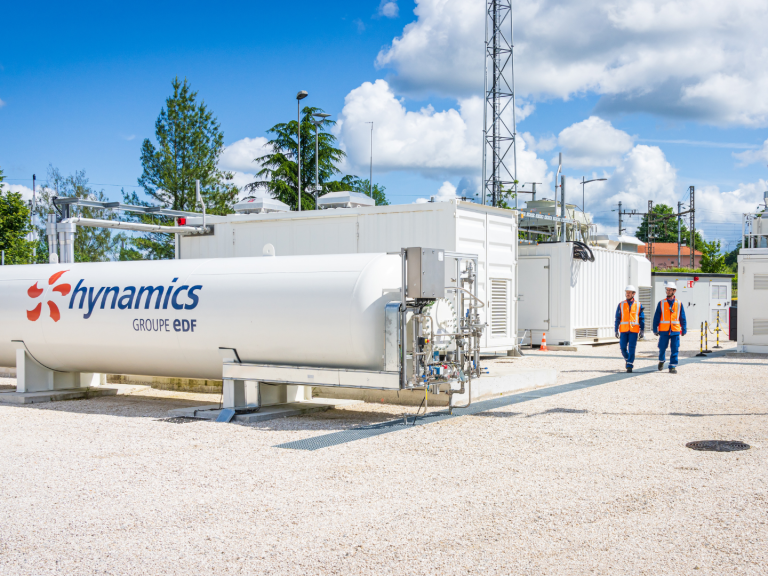Grey 1, blue 2, yellow 3, pink 4, green 5, white 6... It makes us see all the colors, and yet, hydrogen is an essential ingredient in the decarbonization of mobility and industry, provided that it is itself low-carbon or renewable.
To achieve the climate objectives of the Paris Agreement in 2050, in an uncertain international context, political decision-makers and economic actors are at a key moment in strategic choices. Investing in hydrogen from electrolysis, which does not emit greenhouse gases, as proposed by Hynamics, a subsidiary of the EDF group, is the guarantee of achieving powerful, effective and quantifiable decarbonization.
The urgency of decarbonising mobility and industry, major CO2 emitters
Hynamics, a player in the hydrogen sector confronted with the reality of operating an electrolyzer
Expertise in heavy mobility at the service of large-scale projects in industry
The production of synthetic fuels to decarbonise the aviation and maritime sectors
Electrolysis using electricity from the energy mix, the pragmatic solution
Giving up fossil solutions, out of conviction or coercion
SOURCES
1 Grey hydrogen / carbonaceous hydrogen: production of carbonaceous hydrogen via the steam reforming of natural gas (fossil fuel); A technique using methane to crack the water molecule.
2 Blue hydrogen / low-carbon hydrogen but produced from fossil fuels: production by steam reforming and gasification via coal and natural gas with carbon capture and storage.
3 Yellow hydrogen / low-carbon hydrogen: production by electrolysis via electricity in the grid (energy mix).
4 Pink hydrogen / low-carbon hydrogen: production by electrolysis via electricity from nuclear power.
5 Green hydrogen / renewable hydrogen: production by electrolysis via hydroelectricity and electricity from solar and wind turbines.
6 White hydrogen/natural hydrogen: a natural resource that is not the result of a transformation.

